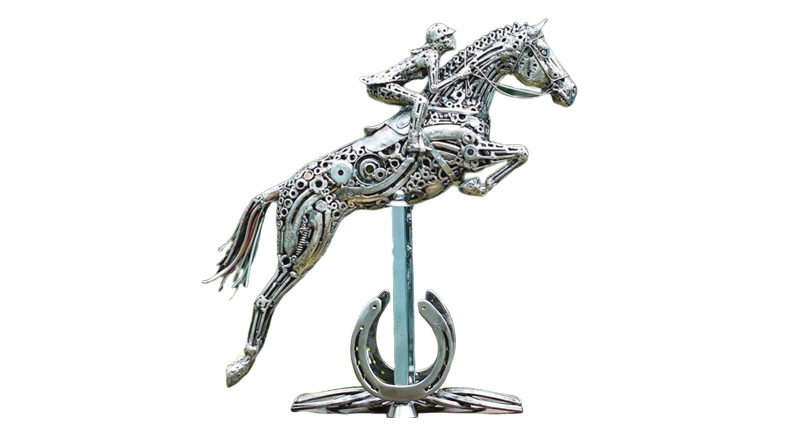

Nothing ever loses its intrinsic value. In other words, there is some latent value that needs to be “realised” by some means. Art can be a means to exploring the value of anything, especially junk objects.
That is something beneficial, as the whole world is grappling with the issue of waste management. Of particular interest for the aesthetically advanced is junk art, which includes scrap metal art.
Though most of us will be familiar with artists such as Brian Mock who are called metal revolutionists on account of their innovative artistic efforts that give a new and enchanting lease of life to reclaimed materials, there needs to be some kind of movement at the global level to employ junk art as an effective strategy to deal with the growing problem of waste.
So, how it all started? There seems to be some consensus that the three-million-year-old Makapansgat Pebble (University of Witwatersrand, Johannesburg) qualifies to be called the world’s oldest piece of junk art. It belongs to the ‘objet trouve’ or ‘found object’ category, though. Nevertheless, it is art, by all means. The Makapansgat pebble, a 260-gram reddish-brown jasperite cobble with naturally formed chipping and wear patterns resembles the human face or skull.
Who is the first junk artist, then? It could be Marcel Duchamp (1887-1968), who was noted for creating sculptures and other works of art from trash and other urban waste. He randomly chose some mass-produced article, separated it from its familiar context and elevated it into a stunning work of art that holds layers of meaning in its new-found environment.
Renowned Dadaist Kurt Schwitters (1887-1948), appreciated for his intriguing mixed-media sculpture pieces crafted from rubbish such as paper and cardboard; the ever-prominent Pablo Picasso with his cubist collages; and Georges Braque (1882-1963) are all thought to have contributed in some way or the other in creating an environment for junk art to evolve to its present grandeur.
Worth mentioning are Picasso’s sculptures such as Guitar (1913, sheet-metal and wire) and Glass of Absinthe (1914, painted bronze with absinthe spoon).
However, the world had to wait a little while for the junk art to grow into an art movement. It happened in the1950s, when artists such as Robert Rauschenberg (1925-2008) focused on creating composite art that combined painting and sculpture. His works used painting, cloth, metal, leather, electric fixture, cable, oil paint, board and what not, to give rise to exquisite junk art.
Around the same time several sculptors started exploring how to employ urban debris and weird materials to create works of junk art.
Today junk art is hugely popular, and ranks high in contemporary art as a highly evolved art stream with a brilliant and practical aesthetic dimension. Junk items, with a little twist in the subtlest manner, are turned into art pieces that invite us to think. Junk now finds its way into painting, sculpture, assemblage, installation and conceptual art.
The Sultanate is not unfamiliar with junk art. The scrap metal installations in Duqm is Oman’s unique contribution to junk art. Gifted Omani sculptor Mohammed al Balushi, who won recognition at the 2019 World Industry Exhibition at the World Trade Centre, Dubai, and others can truly start a junk art revolution in the Sultanate. Apart from its aesthetic appeal, such a movement can contribute significantly to creating greater public awareness about the issue of waste.
Oman Observer is now on the WhatsApp channel. Click here



